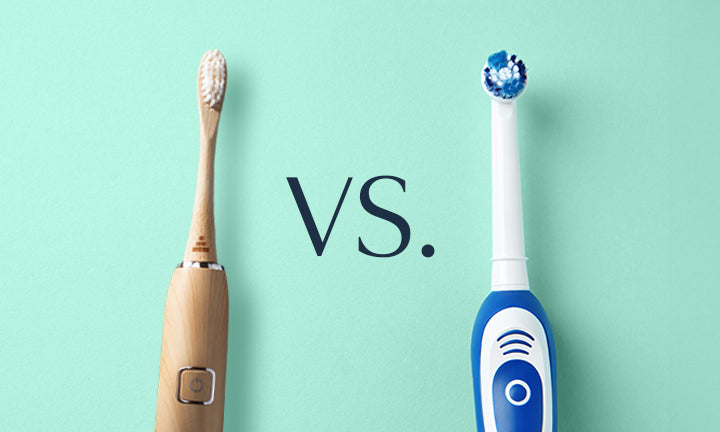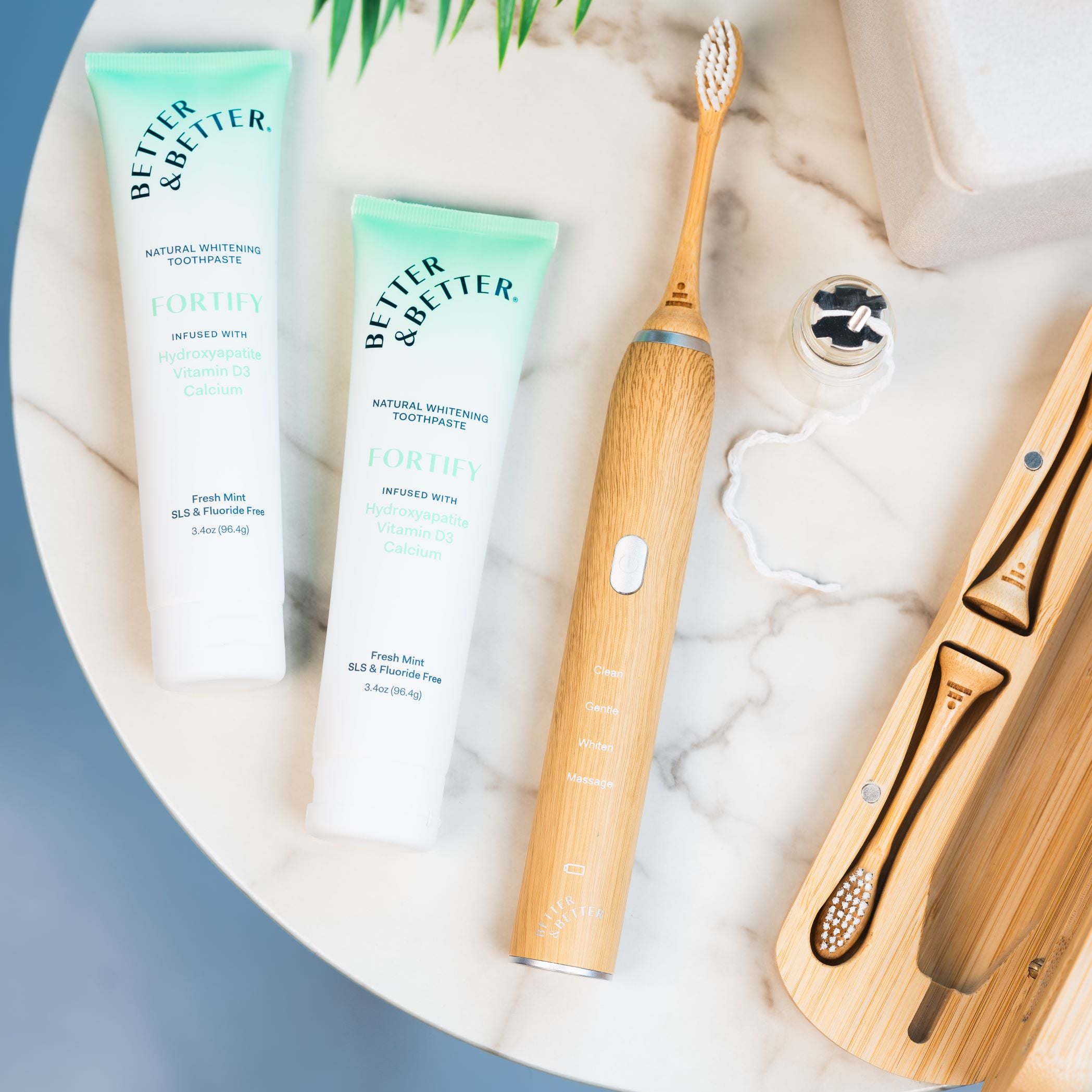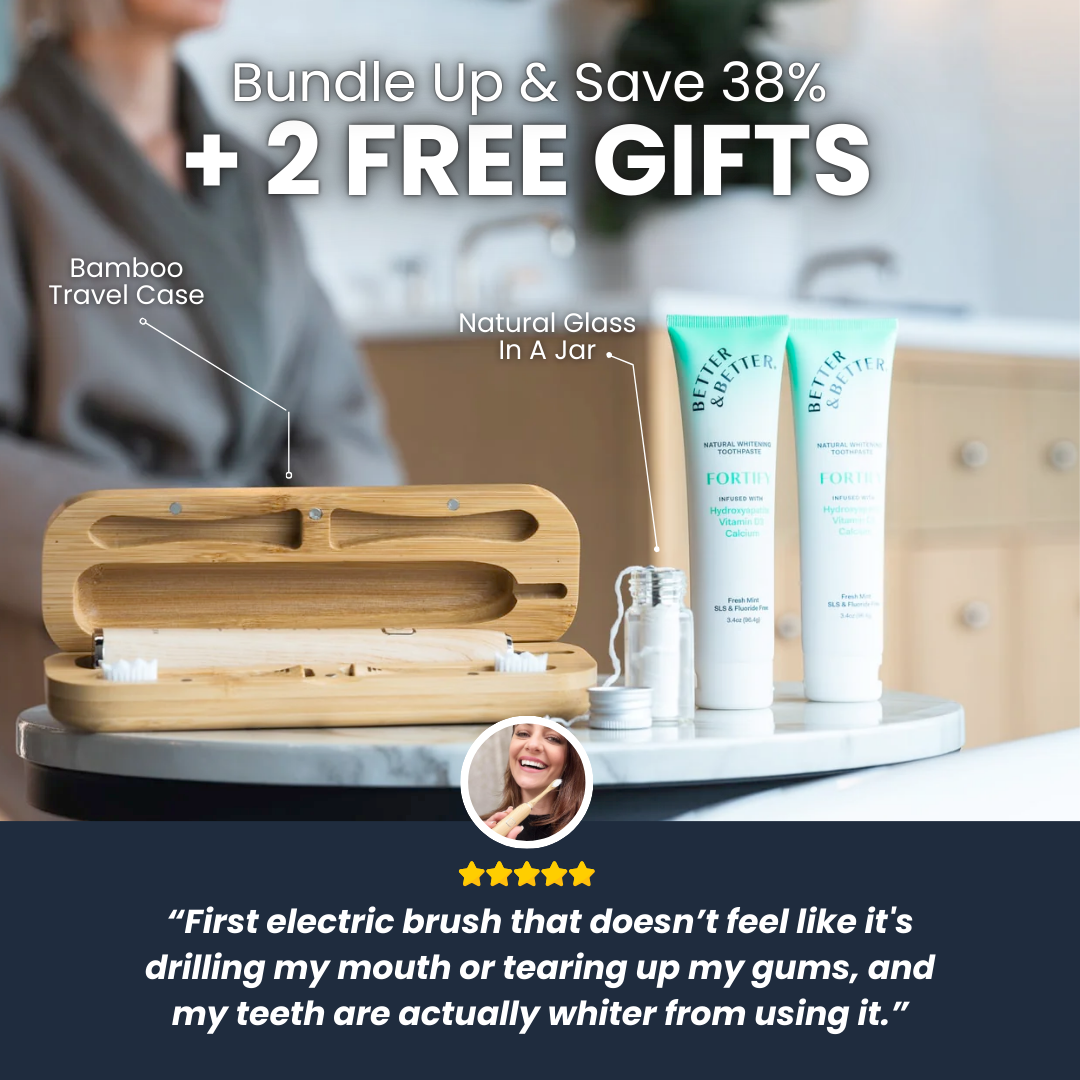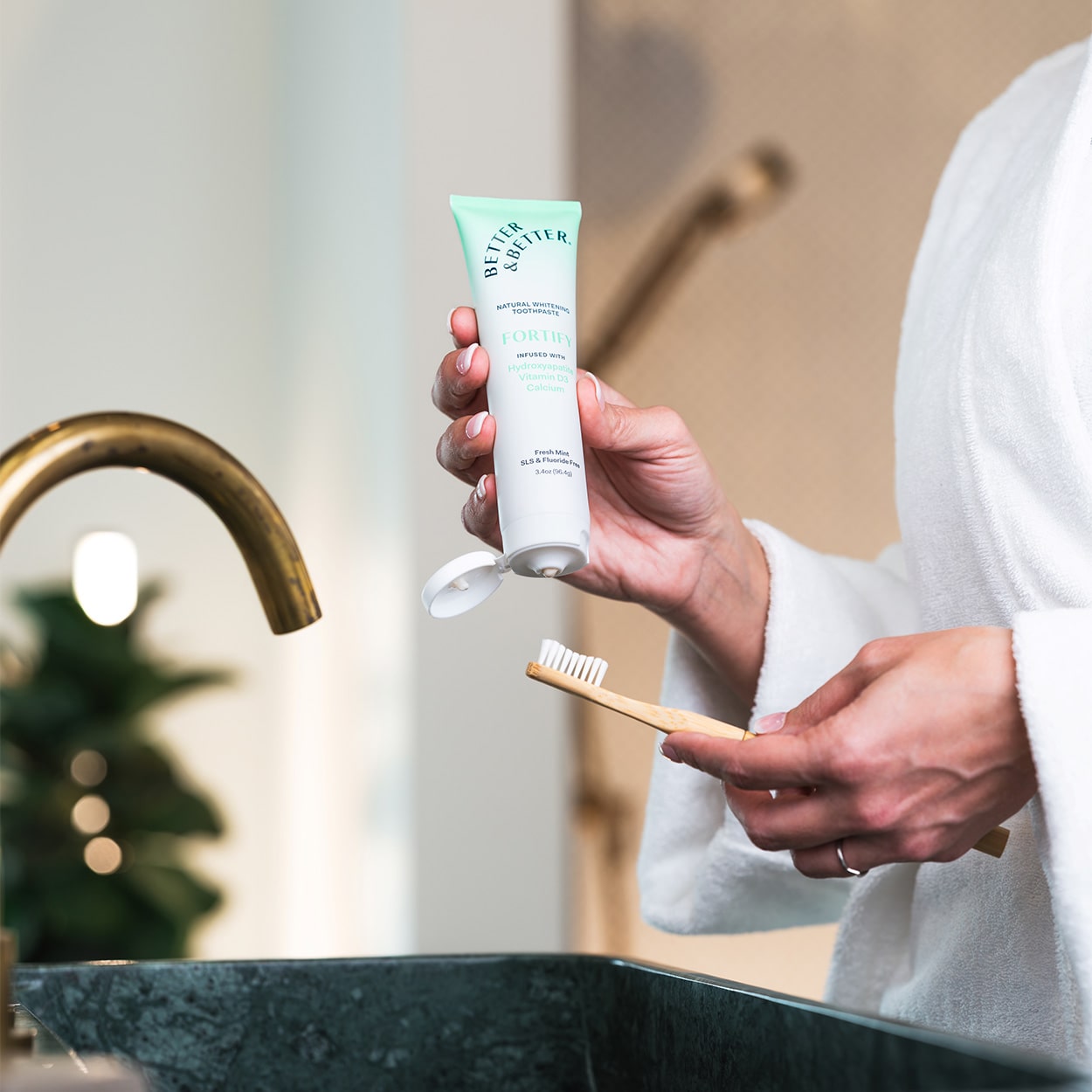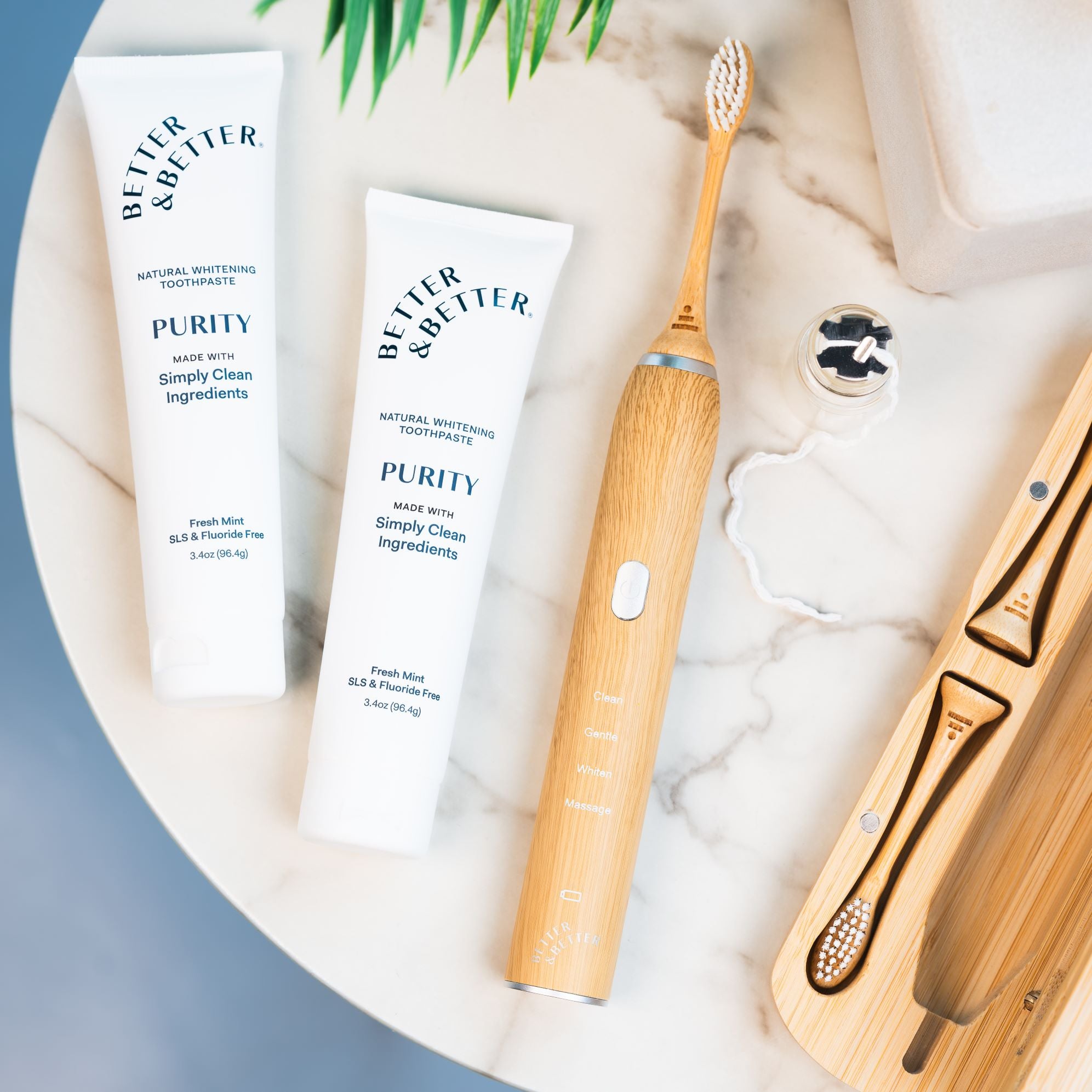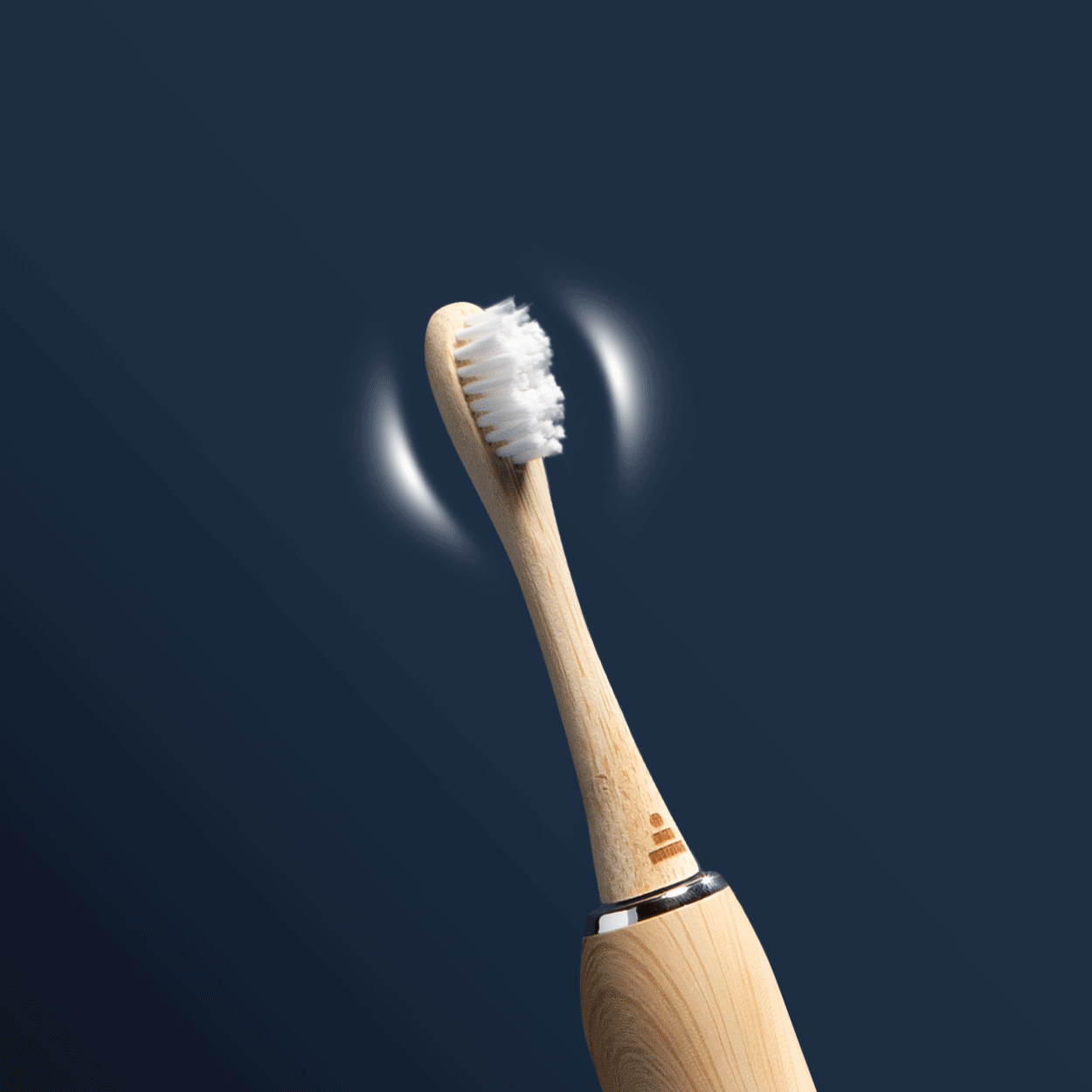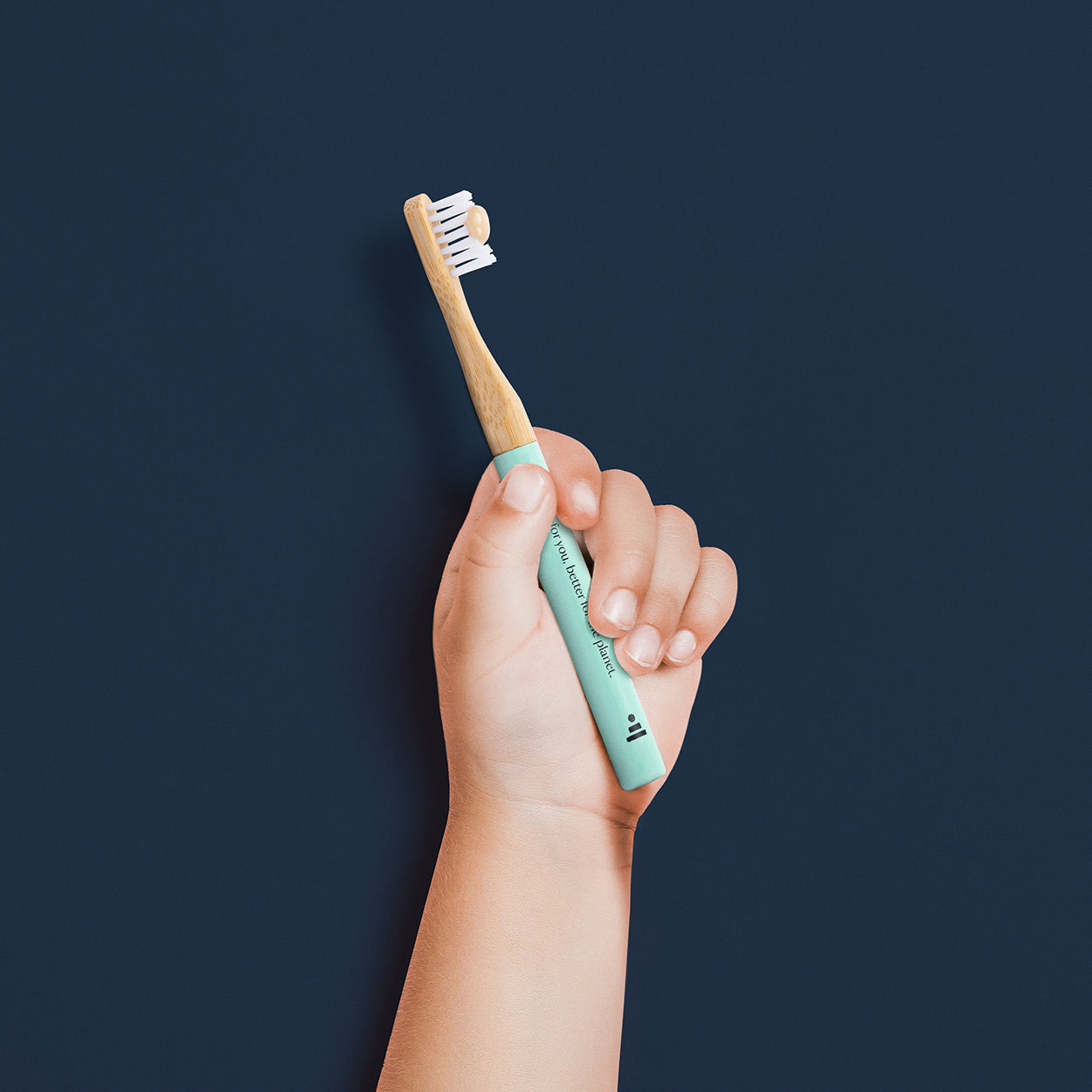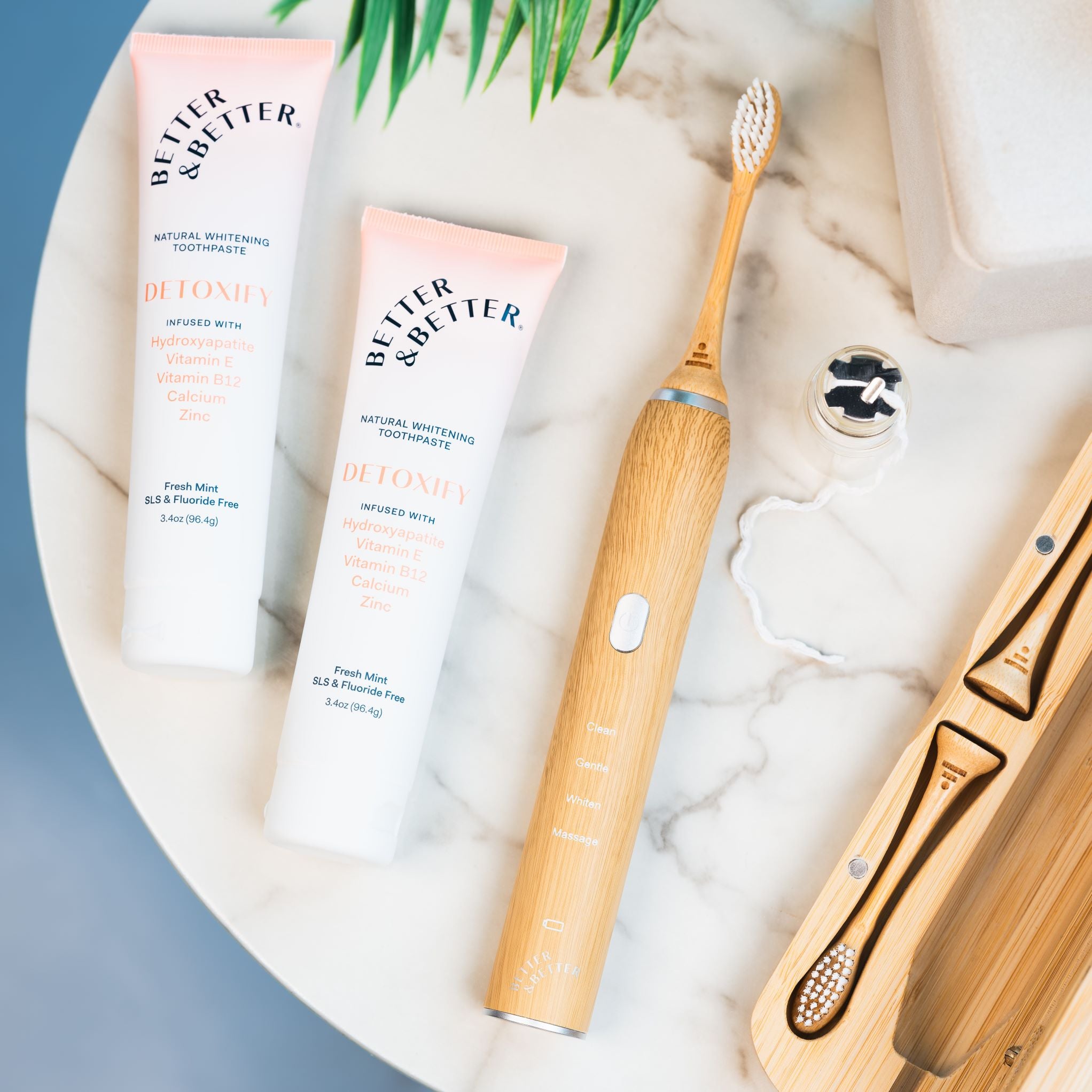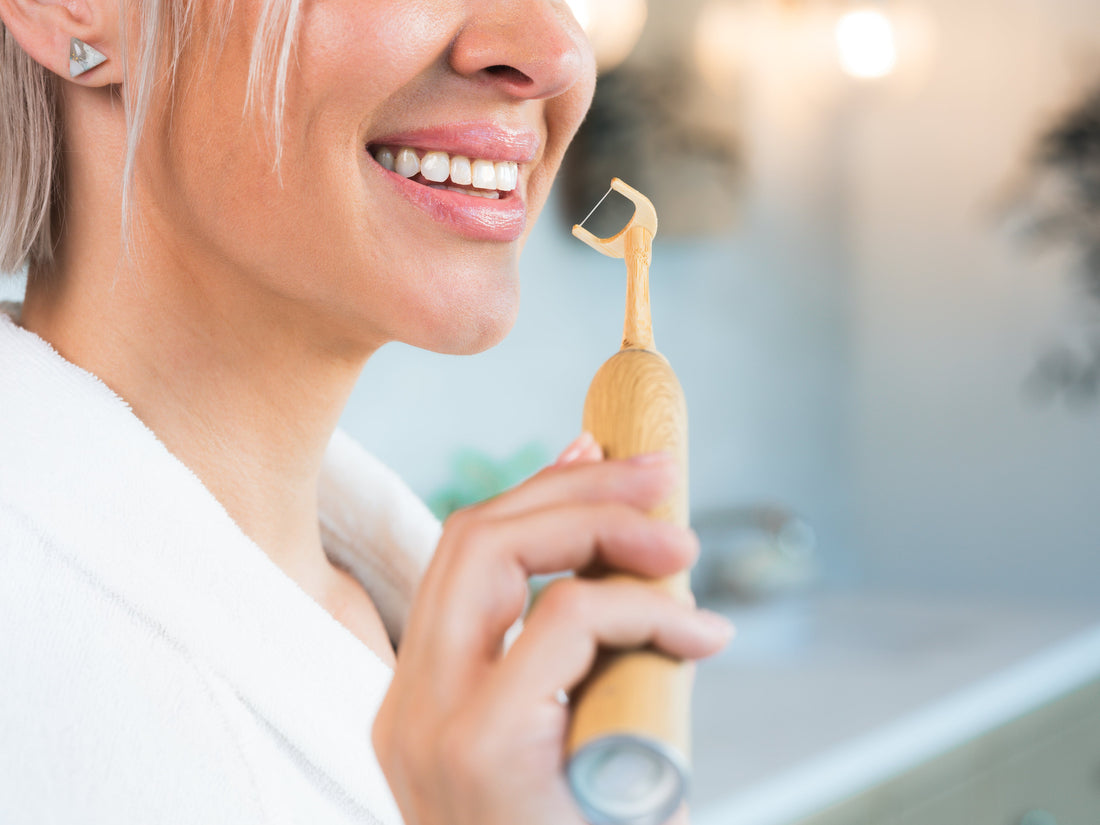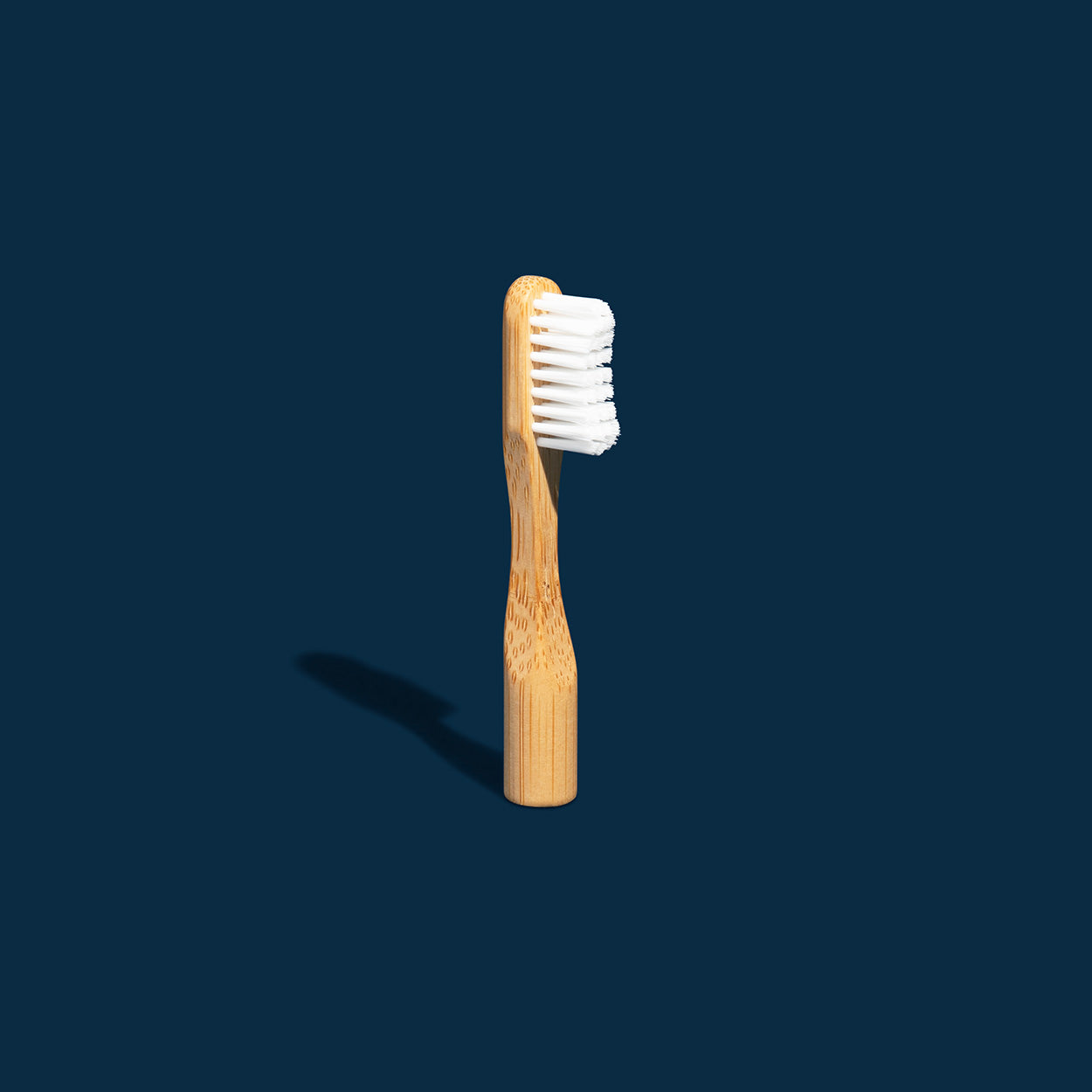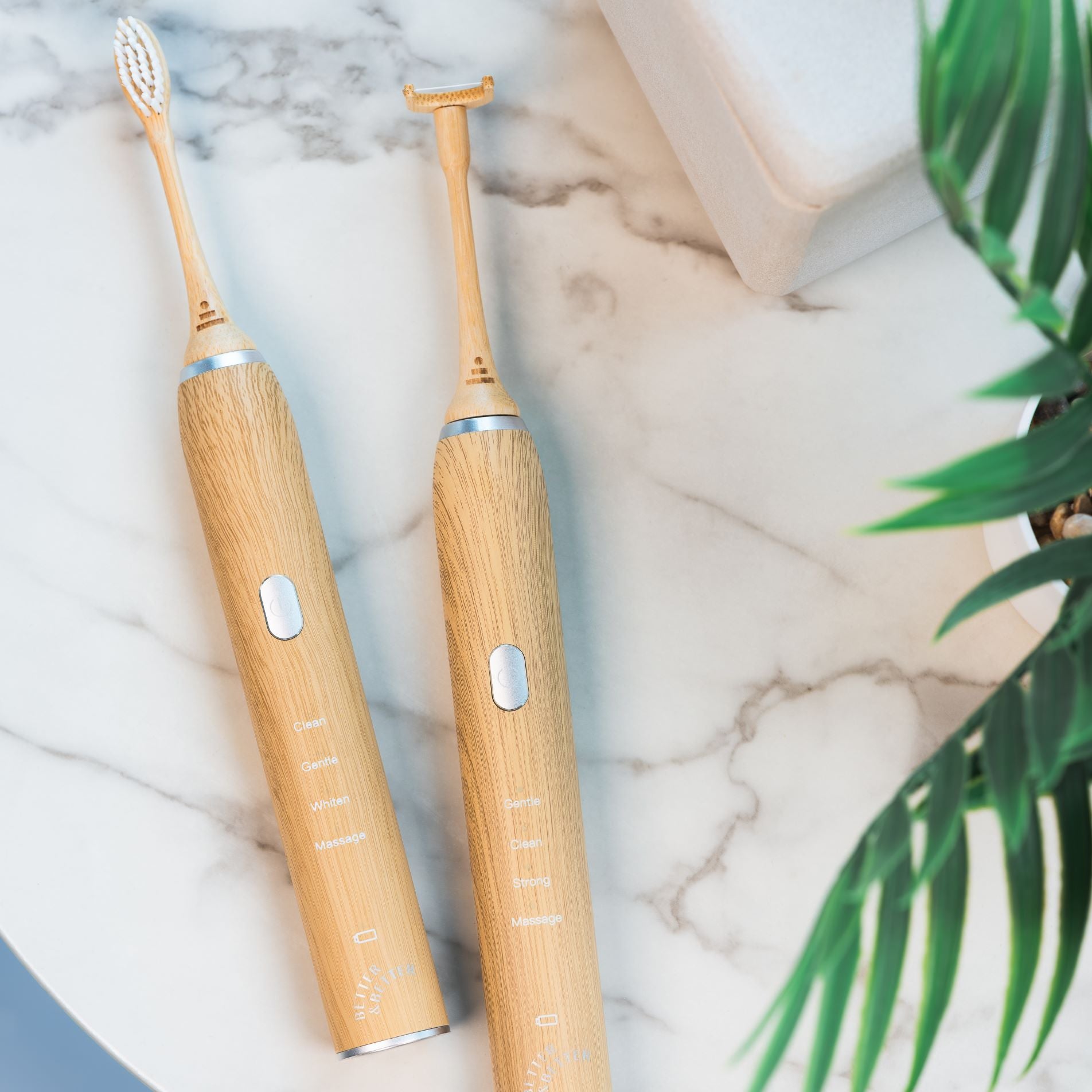Here are 4 key differences between a sonic toothbrush and a standard electric toothbrush:
- Sonic toothbrushes deliver up to 15x more brush strokes per minute than a standard electric toothbrush
- Sonic toothbrushes utilize high-frequency vibrations instead of an oscillating motion
- Sonic toothbrushes are better at reducing gum inflammation, controlling plaque buildup, and preventing periodontal disease
- Sonic toothbrushes require less physical effort and manual maneuvering
There have been some big leaps in brushing technology over the past century. But there’s one breakthrough that stands out amongst the rest: the introduction of the sonic toothbrush .
Some people put sonic toothbrushes in the same category as other types of electric toothbrushes you’d find in your local oral care aisle. But that’s like comparing a high performance sports car to an old clunker.
Sure—a basic electric toothbrush is better than a manual toothbrush (assuming you use it as directed). But if you really want to optimize your oral hygiene, sonic is the way to go. From enhanced brushing power to plaque removal, sonic toothbrushes are the ultimate oral health hack.
In this article, we’ll break down four key differences between a sonic toothbrush and a regular electric toothbrush.
1. Vibration Frequency
The biggest difference between a standard electric toothbrush and a sonic toothbrush is brushing power.
A regular electric toothbrush averages between 2,500 and 7,000 brush strokes per minute.
However, a sonic toothbrush operates at frequencies in the sonic range (up to 20,000 Hz) to deliver up to and beyond 30,000 brush strokes per minute.
These high-frequency vibrations create turbulence that dislodges plaque and debris in hard-to-reach areas beyond the bristles' physical contact.
Think of it like using a power washer instead of a garden hose.
2. Cleaning Mechanism
Another key difference is how the brush head on a sonic toothbrush moves.
A standard electric toothbrush operates with rotating or oscillating brush heads that scrub your teeth directly. (This is similar to manual brushing, with the added benefit of powered motion.) On the other hand, the high-frequency vibrations of a sonic toothbrush create a dynamic fluid action that agitates and removes plaque and bacteria beyond the bristle’s reach.
The result? A more thorough, deep cleaning between your teeth and along your gum line.
3. Cleaning Effectiveness
Decades of research suggest that sonic toothbrushes are better at reducing gum inflammation, controlling plaque buildup, and preventing periodontal disease.
One clinical trial, published in the Journal of Clinical Dentistry , compared the effectiveness of a sonic toothbrush and a standard electric toothbrush for 66 adults with moderate periodontitis. The researchers arrived at two key conclusions:
- The sonic toothbrush group had significantly less interdental plaque compared to the electric toothbrush group after six months.
- The sonic toothbrush group reduced their gum inflammation by 31.9%, compared to 18.1% in the electric toothbrush group.
As you can imagine, sonic toothbrushes also perform far better than manual toothbrushes. According to a 2017 meta-analysis of 18 studies, sonic-powered toothbrushes “ decreased plaque and gingivitis significantly more effectively than manual toothbrushes” when used every day for three months.
4. Ease of Use
It takes a lot of physical effort to maneuver a standard electric toothbrush around the nooks and crannies of your teeth. But the high-frequency vibrations from a sonic toothbrush make brushing a breeze. The dynamic fluid action helps you effortlessly erase plaque and bacteria in hard-to-reach spots, especially along your gum line.
Additionally, sonic toothbrushes (like Better & Better’s Bamboo Sonic Toothbrush ) come equipped with advanced features like built-in timers and multiple cleaning modes that suit your unique set of pearly whites. It’s as easy as pressing a button and letting the gentle sonic microvibrations whisk you off to a brighter smile in two minutes.
Brush Better with a Bamboo Sonic Toothbrush
As you can see, using a sonic toothbrush is a no-brainer if you want to upgrade your oral care routine. That said, they’re not all created equal.
Many sonic toothbrushes are made of plastic and have nylon bristles—neither of which is ideal for your health (or the health of the planet). That’s why we designed our Bamboo Sonic Toothbrush with a natural bamboo brush head and 100% plant-based, soft bristles.
Here’s a rundown of the key features:
- Microvibrations up to 31,000 strokes per minute
- 2-minute timer with 30-second interval pulses
- 5 modes: cleaning, whitening, polishing, milder, and sensitive
- Long-lasting rechargeable battery
- Waterproof
- Replaceable bamboo brush head
- 100% plant-based, castor bean oil bristles
Women’s Health , WIRED , and CBS News all ranked our Bamboo Sonic Toothbrush among the best options out there, and our resident oral surgeon Dr. Jacci backs up those accolades.
"It has all of my must-haves—a timer and soft, plant-based bristles," says Dr. Jacci. "And the bamboo brush heads reduce plastic, making it a more sustainable choice."
Ready to start brushing better? Grab yours today and see for yourself why thousands of people are making the switch to sonic.


